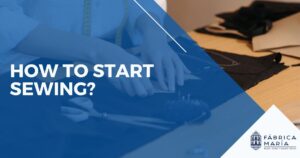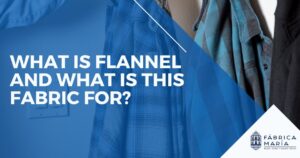How to choose the best fabric for upholstery?
Share in:
Content
Upholstered furniture receives different degrees of use depending on the type of piece and where it is located. Regardless of what use is given, it is important that the fabric for upholstery resists well the level of normal use. For example: Sofas, which are only moderately used, such as those in bedrooms, will work well with a less durable fabric; however, parts subjected to heavy daily use, such as the sofa in the living room, should be covered with resistant fabrics, durable and thick fabric to protect them from stains and damage.
What are the most commonly used upholstery fabrics?
Textiles for upholstery can be divided into 2 categories: natural and synthetic.
Natural materials
These types of upholstery fabrics are woven with natural materials. This includes plant fibers or materials derived from animal products. These are some of the most commonly used natural fabrics in upholstered furniture.
-
Cotton
This material is obtained from cotton bushes and is by far the most common.Pros: Cotton is a quality solution; it is soft, breathable and keeps color very well. It is also one of the most durable options and is available in different yarn numbers for a lighter or heavier feel. It can also be mixed with other materials to increase its durability.Cons: Cotton absorbs liquids and stains easily and retains odors for longer than other materials. It also wrinkles and fades with direct sunlight. -
Linen
Linen is a lightweight material made from flax plants. It is generally fine, porous and light in both appearance and touch.Pros: Linen is a tough choice that offers a soft touch and a relaxed, earthy look. It is also very breathable so it is cooler; in addition, it is a natural material resistant to discoloration and is considered hypoallergenic.Cons: Does not resist as well as other thicker materials and stains easily, but stain problems can be minimized by pre-treating the tissue. It also retains odors for longer than many other materials. -
Velvet
Velvet is a mixture of synthetic and natural fibers.Pros: The three main attractions of velvet are its attractive shine, the richness of its colors and its soft comfort. The texture changes as you brush it, showing its depth and tone variations from different angles. Likewise, it resists pets and even conceals some marks and scratches.Cons: Although it has some advantages with pets, it also retains pet hair and traps dirt and dust more easily. So, it is difficult to clean. You need to vacuum it regularly to keep it in good condition.
Synthetic materials
Designed to be durable and easy to clean, synthetic upholstery fabrics require less manufacturing costs than natural ones.
Synthetic fabrics are known to dry quickly and be very absorbent.
-
Polyester
This material is one of the most common synthetic options. It is a plastic that is usually derived from oil, although it can also be made from recycled materials, waste or food crops.Pros: The popularity of this material is due to its combination of low cost, high durability, ease of cleaning and wrinkle resistance. It resists stains, and its variety of aspects, thickness and color retention make it very demanded. It also keeps its shape well and does not retain odors as much as cotton or linen.Cons: The long list of advantages comes with some drawbacks. Polyester can crack with heat and is prone to stretch over time. It is also flammable. -
Microfiber
Microfiber is composed of ultrafine polyester fibers and added ingredients such as nylon.Pros: Like polyester, microfiber is one of the most durable fabrics and stands out for color retention, comfort and stain resistance. It can be easily applied as upholstery while still offering the soft comfort and resistance needed.Cons: Although partially composed of polyester, it is less durable than pure polyester and should not be considered a long-term weaving option. It has some stain resistance, but some water stains can be maintained, and pet hairs can get trapped in the upholstery.
How to choose the best fabric for upholstery?
The type of upholstery to use depends largely on several factors. When buying a material, you should consider comfort, durability and style.
Fabrics for upholstery rooms and sofas
Materials easy to maintain and clean, such as polyester, microfiber, cotton. For elegant furniture that is used less frequently, they can be materials such as velvet or linen.
Dining and reclining chairs
Being furniture that have a great demand in its use, it is advisable to use fabrics with great resistance as they are composed of polyester.
Sofa bed
This type of furniture works as a sofa and bed, with cushions that act as a headboard. All this activity requires more than the sofa. Use fabrics that are durable and clean, but do not retain odors. These can be polyester, microfiber, or cotton.
In conclusion
To choose the best fabric for upholstery in the long term it is important to consider the following points:
Intended Use: Determines the intended use of the furniture. Is it intended for a high-traffic area, such as a living room, or for occasional use? The use will affect the durability you need on the fabric.
Durability: For furniture that will be used frequently, look for durable fabrics. Fabrics with high content of natural fibers. Also consider treated fabrics to resist staining and wear.
Patterns and Colors: Choose a pattern or color that suits the aesthetics of your space. Printed fabrics can add visual interest, but keep in mind that large patterns may require more fabric and increase cost.
Follow us on Facebook.




